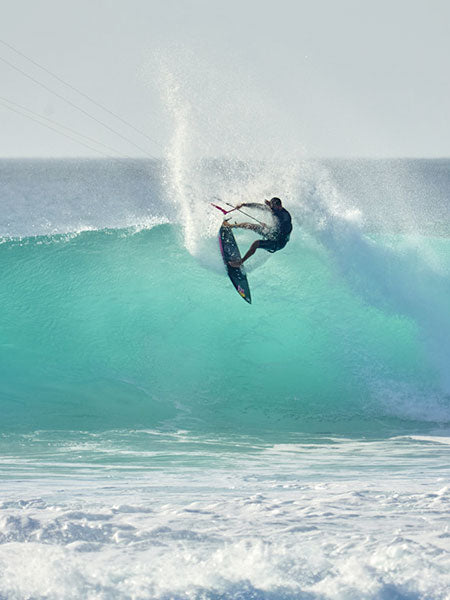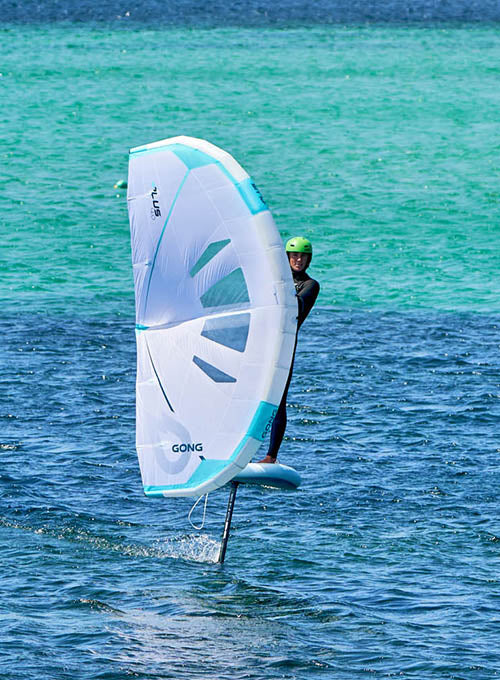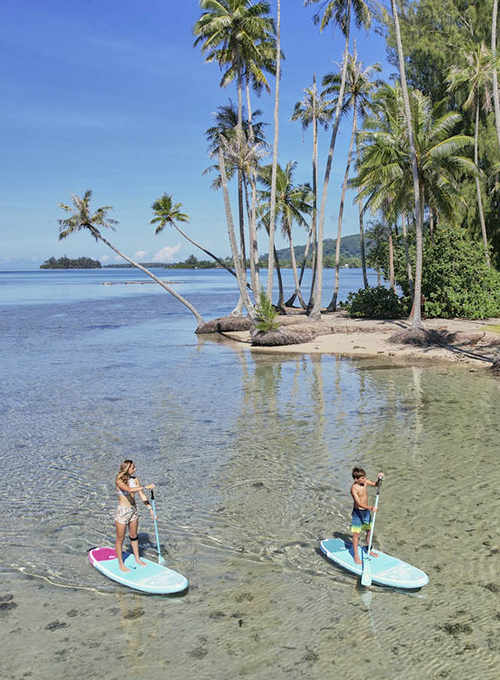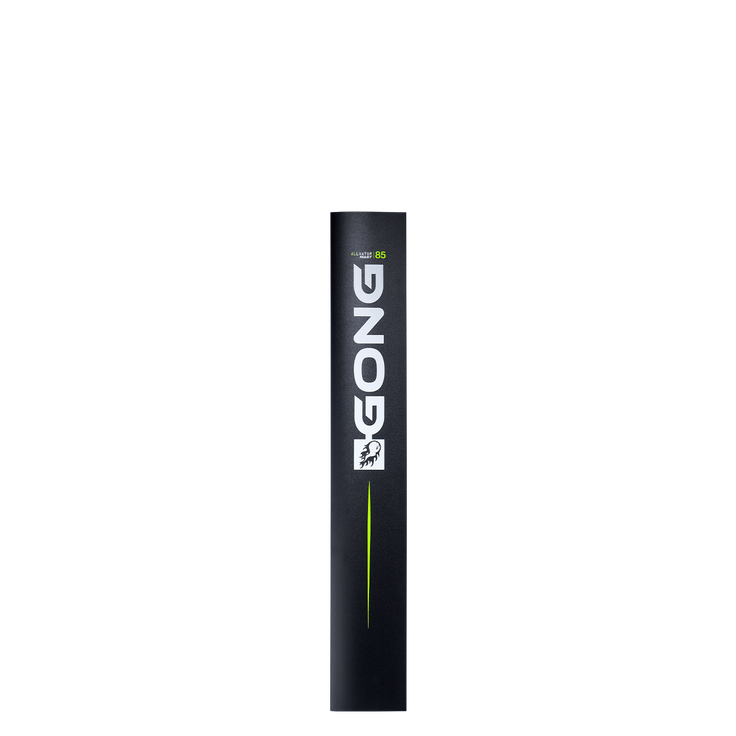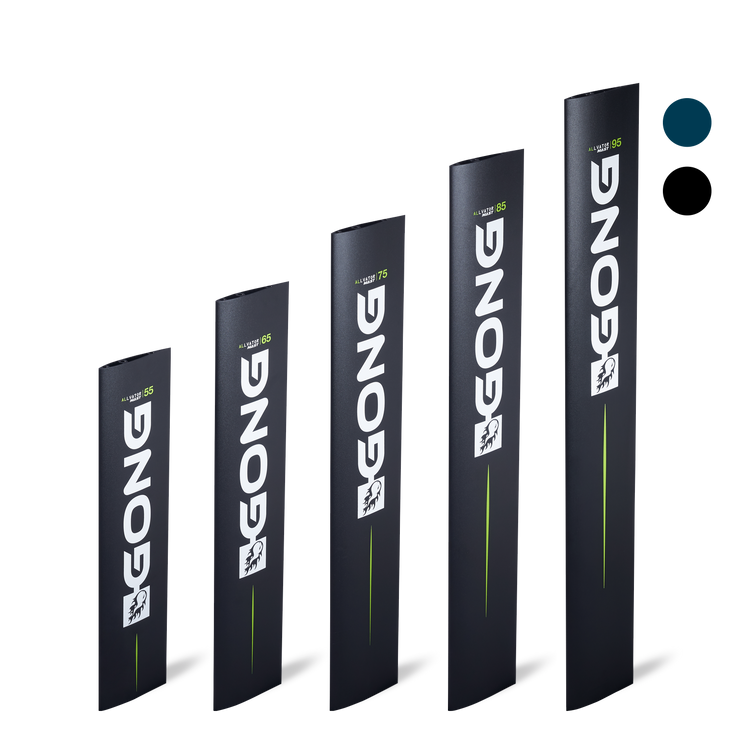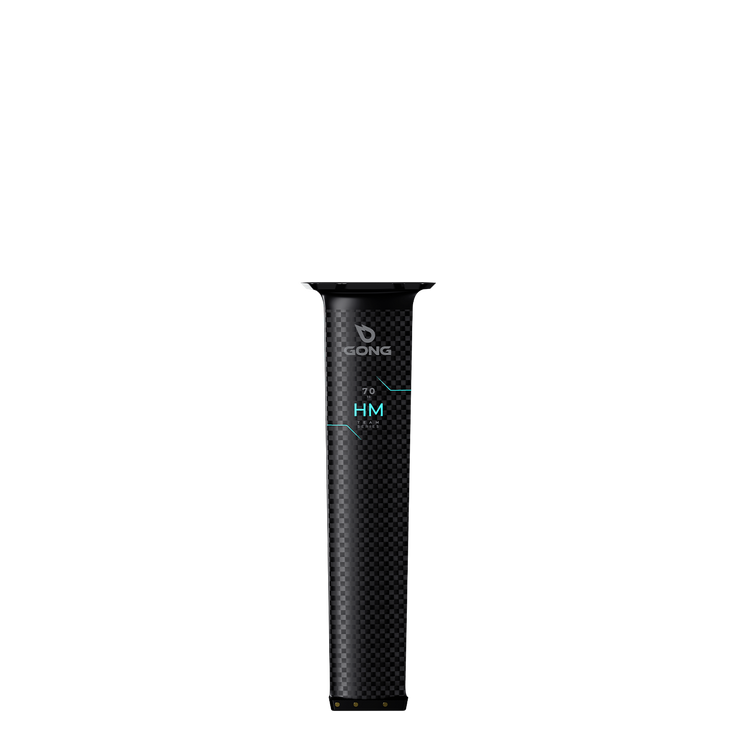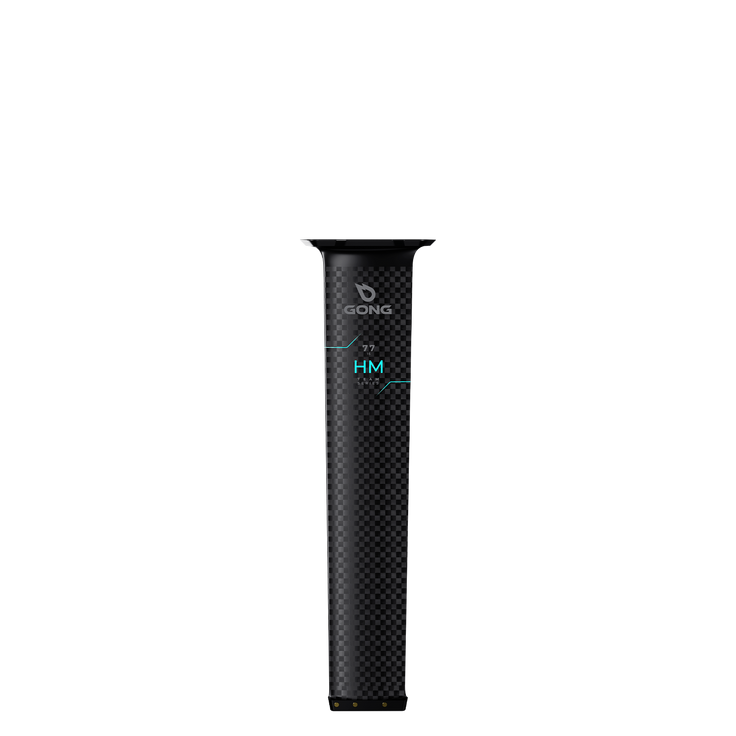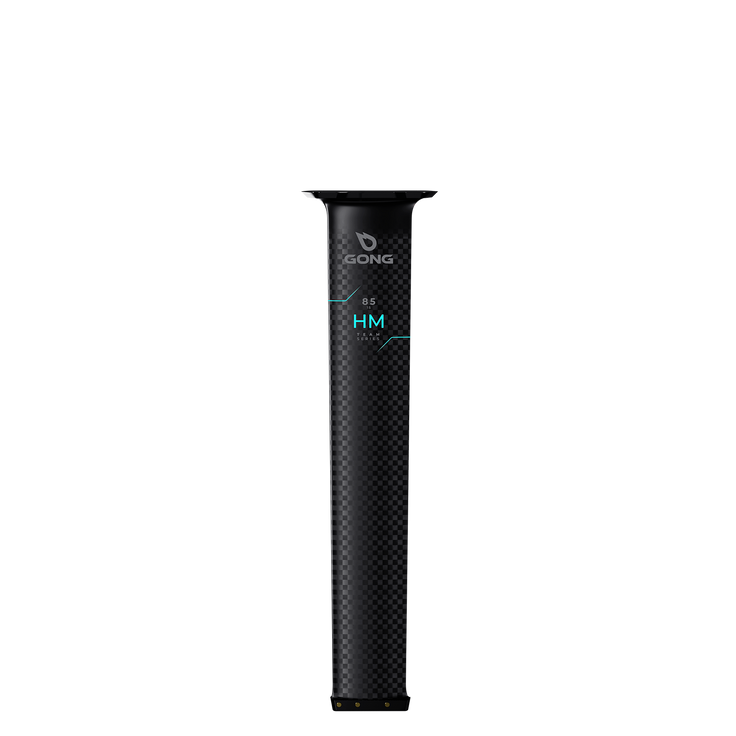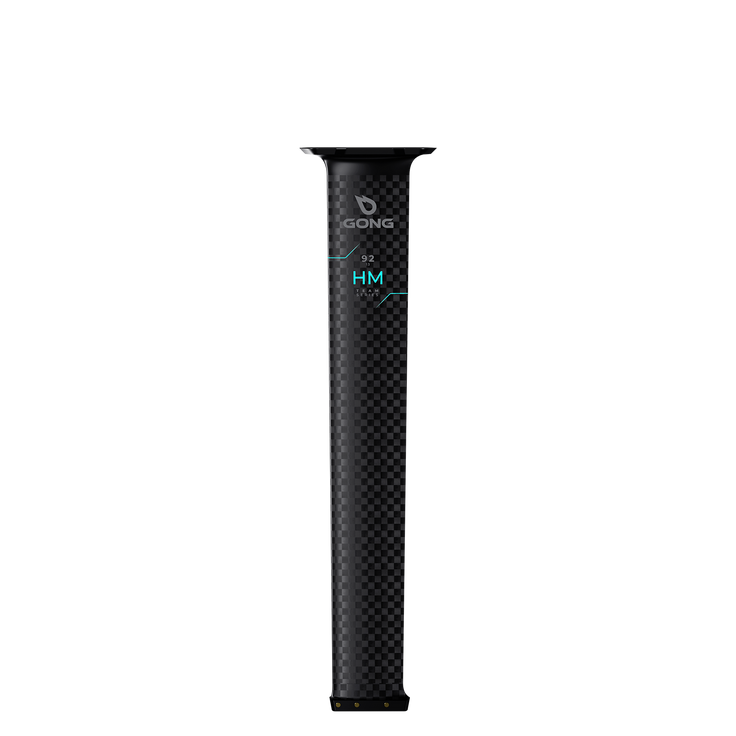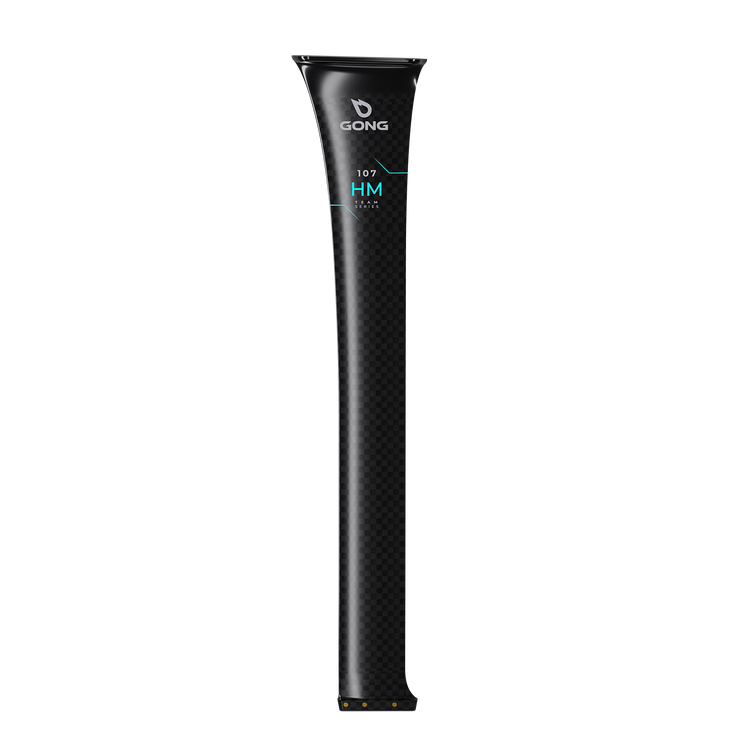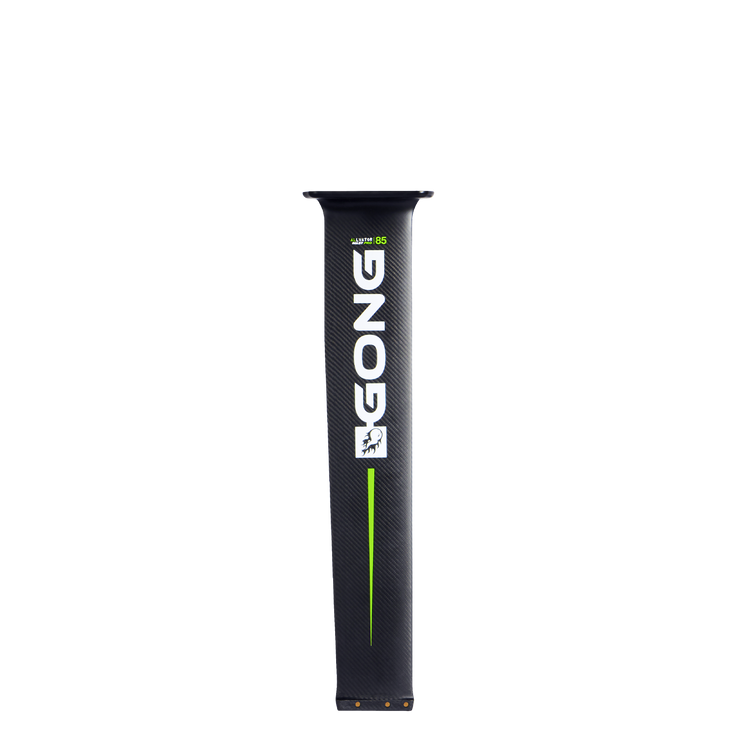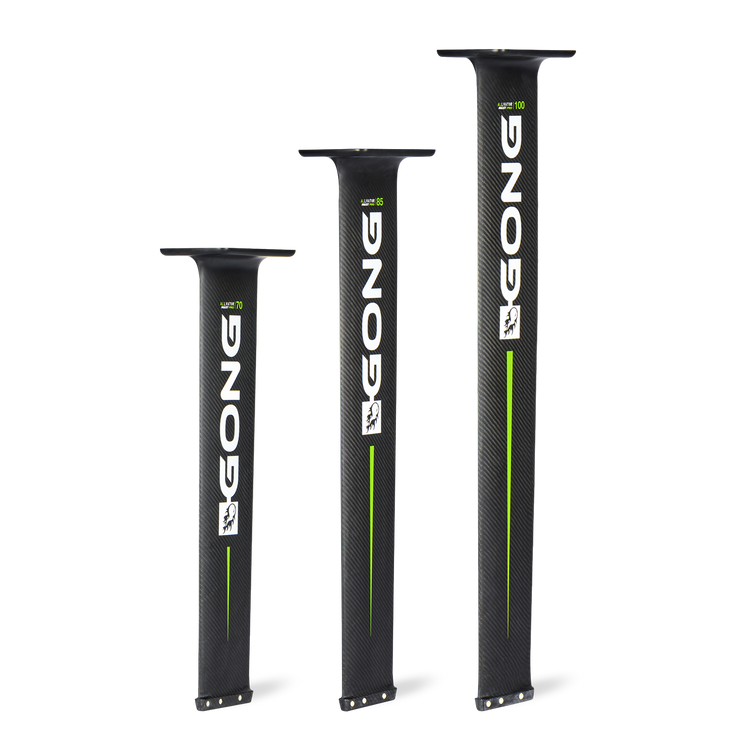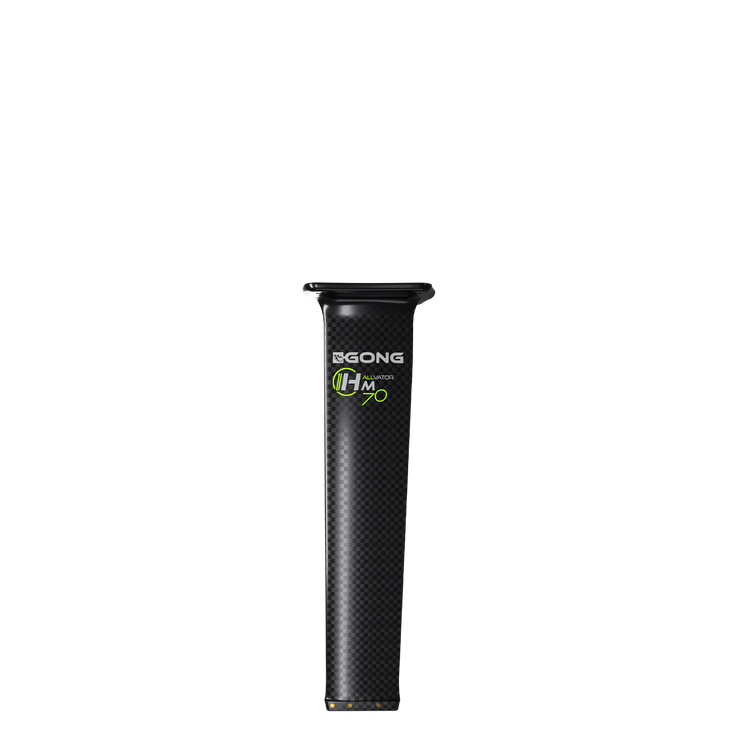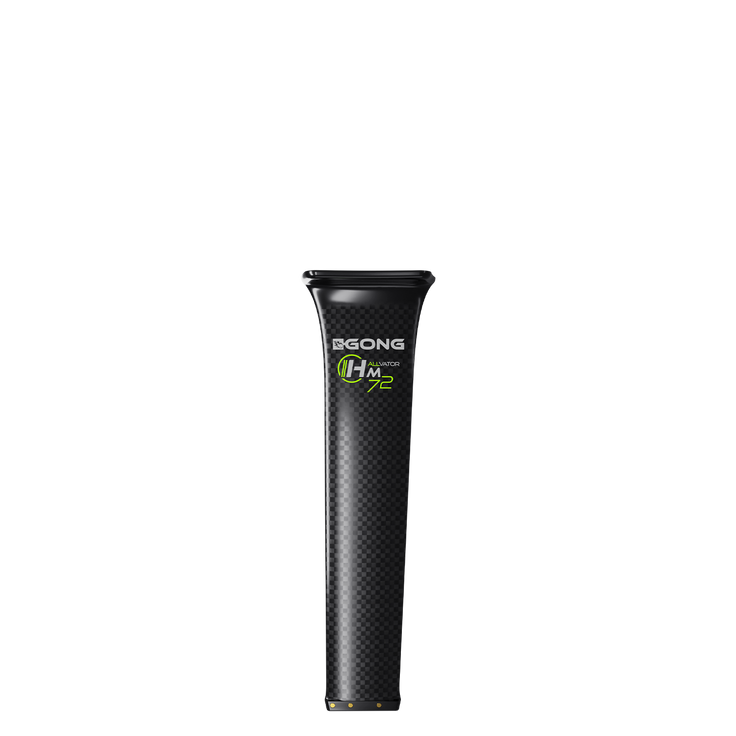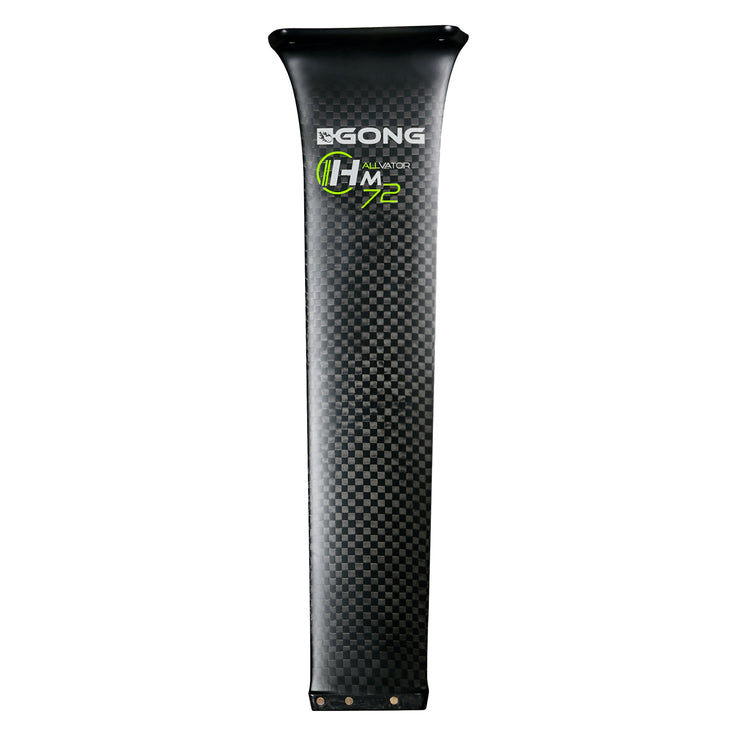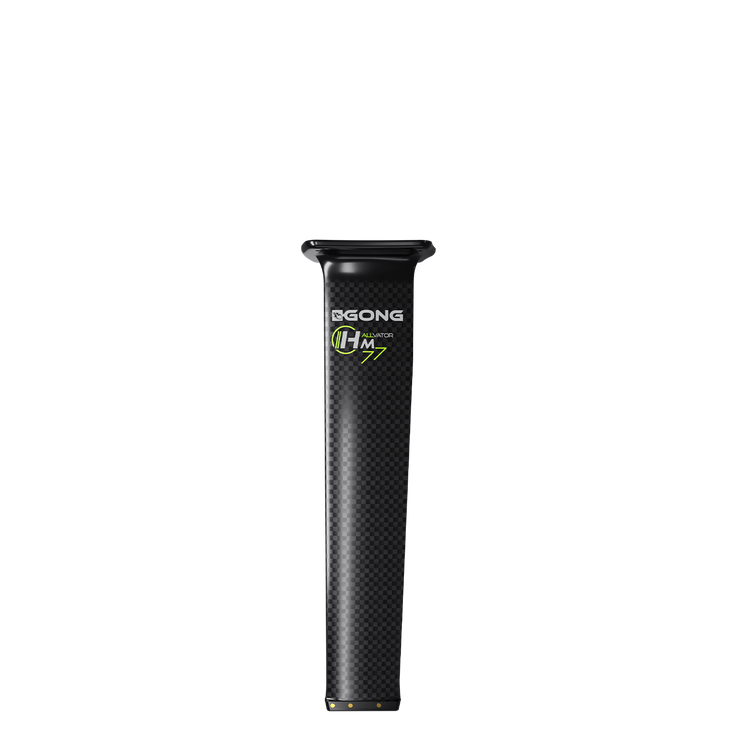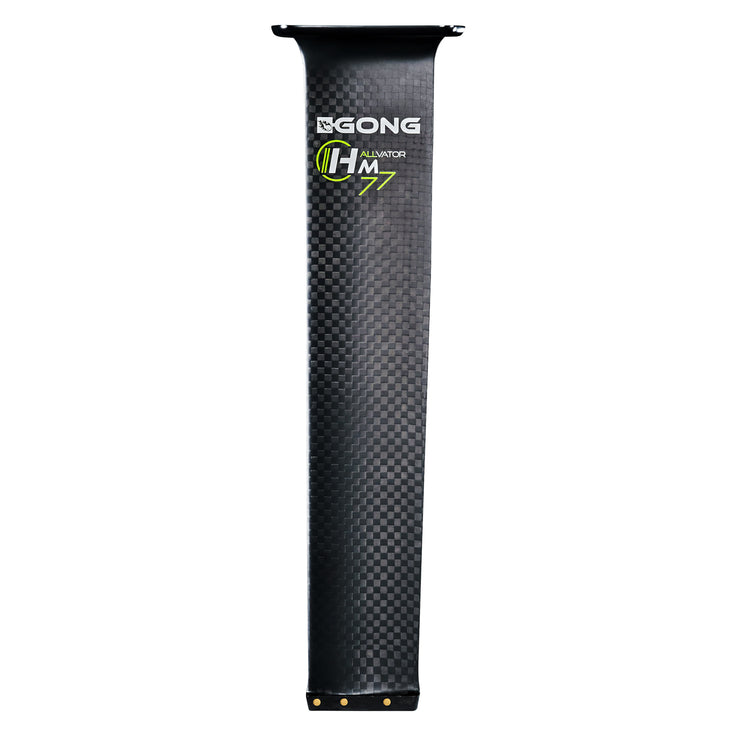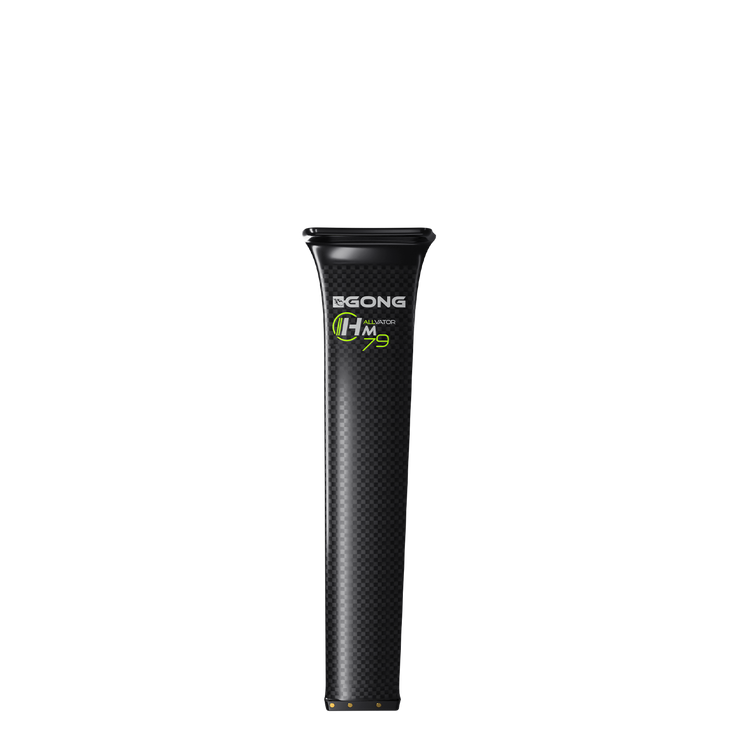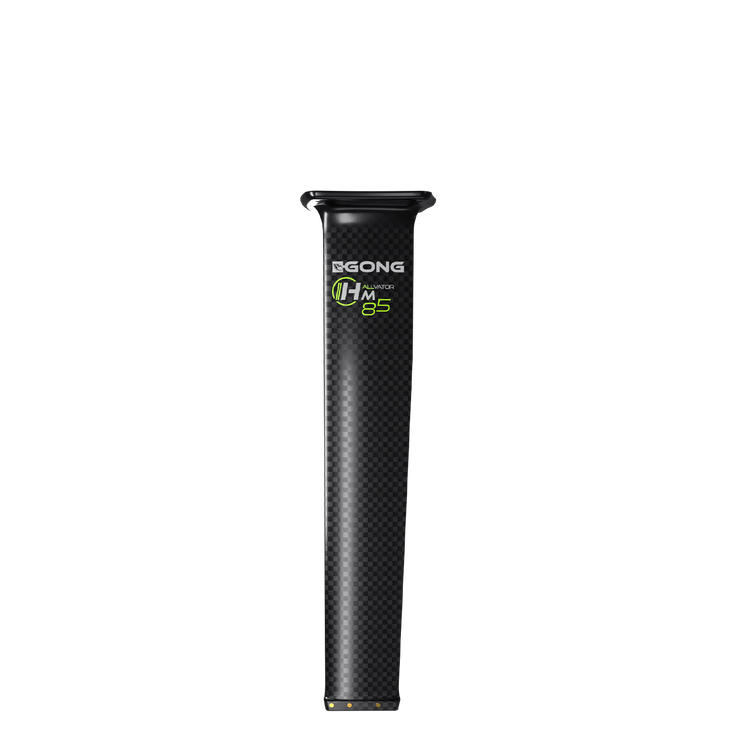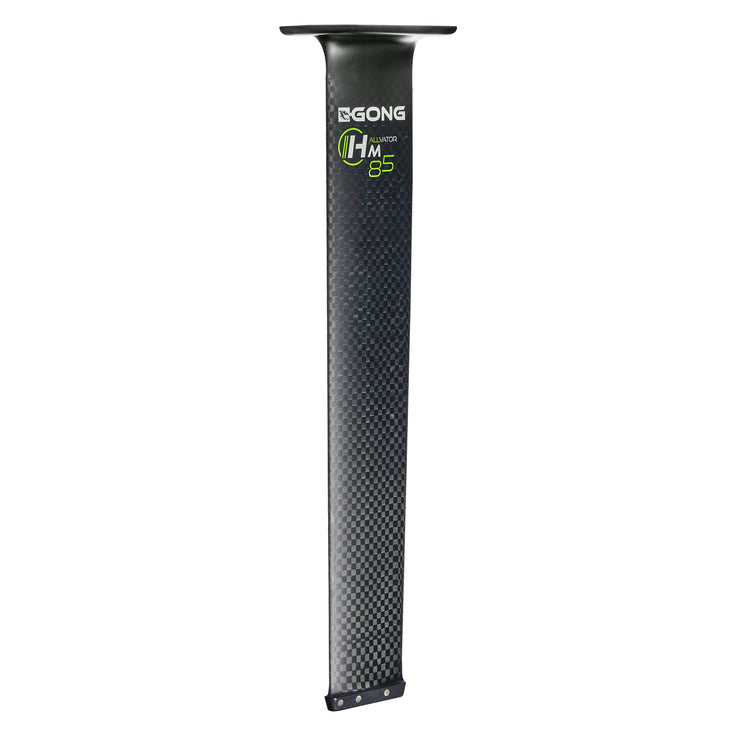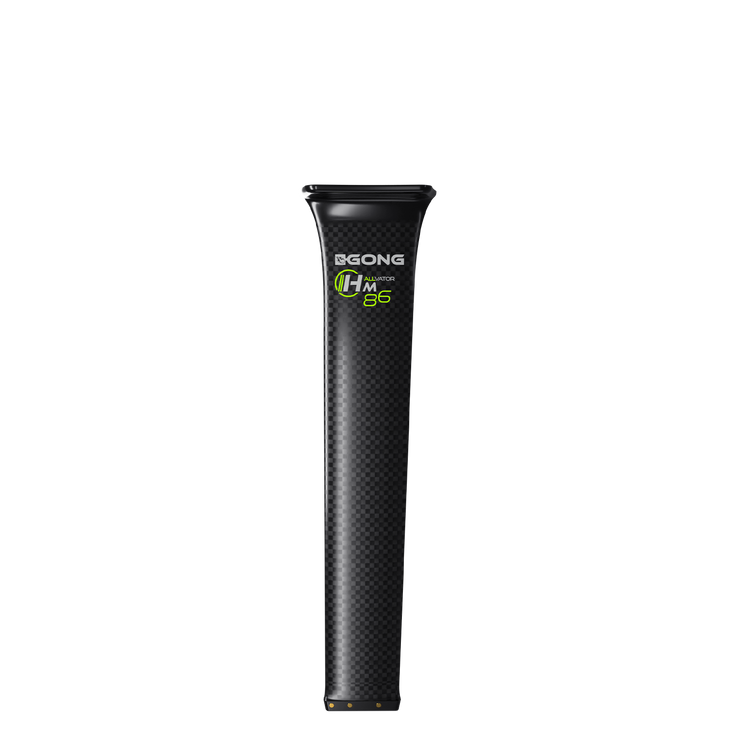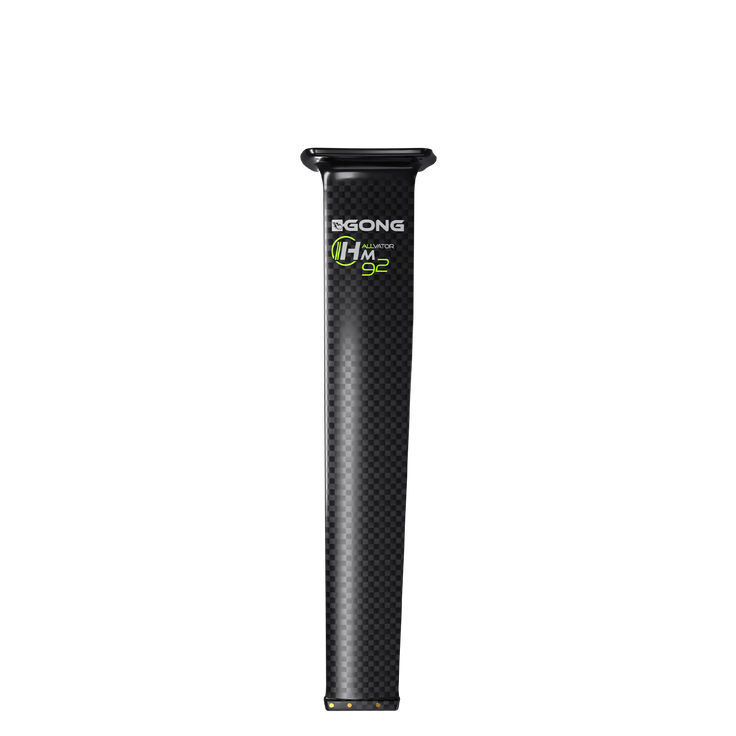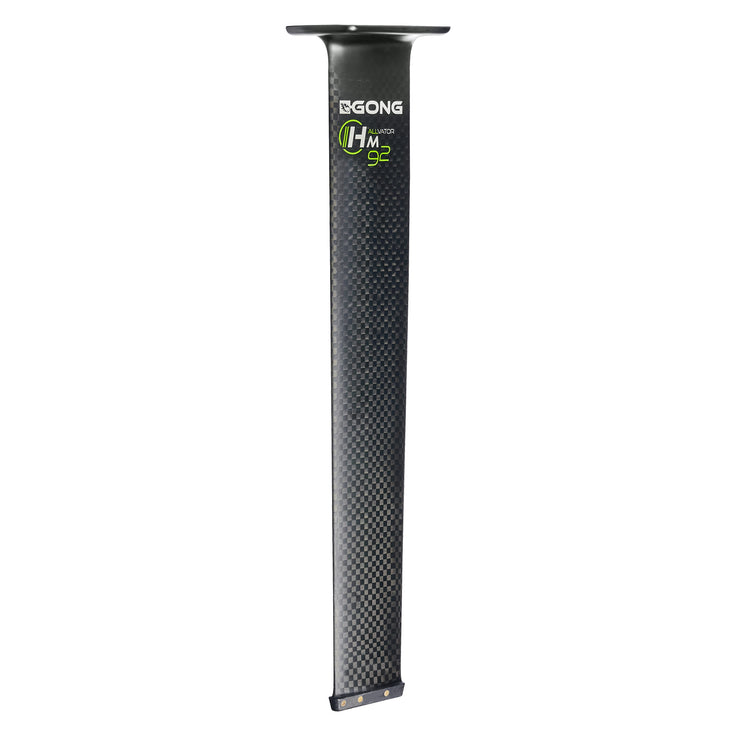Choosing an aluminium, carbon or hm carbon mast
Much more than just a link between your board and the plane of your foil, the mast plays a huge role in your performance on the water!
The variety of shapes, technologies and sizes, testifies to the different ways in which it influences the quality of your flight phases. We help you identify the mast that will best convey all your intentions on the water.

The number one quality of a mast
The key word when talking about a foil mast is rigidity. A perfectly rigid mast is a real game changer and a must when using very large wings. The rigidity of your mast ensures direct transmission, without blurry or parasitic movement, of all your intentions to the foil. This translates to sessions with fewer wipe-outs, more confidence and precision in your turns and jumps. This means significantly more performance and commitment. Cutting-edge technology as HM Carbon also makes it possible to work on the shape of the mast by refining its thickness, for example, to gain speed.
We offer 3 high-end technologies:- Alu masts: The most accessible. Offered in many sizes for beginners in all sports.
- Carbon masts: For a compromise between weight / rigidity / solidity.
- HM masts: For ultimate performance.
 Surf foilers: Clément, Bastien and Malo, GONG team riders, with 77HM and 70HM V3 masts.
Surf foilers: Clément, Bastien and Malo, GONG team riders, with 77HM and 70HM V3 masts.
1/ Aluminum masts:
By choosing an aluminum mast, you are opting for a very efficient and affordable solution because an aluminum mast is easier and faster to produce than a carbon mast. The excellent rigidity of aluminum offers very precise and efficient steering.
Compared to a carbon construction, the aluminum mast does however have some disadvantages:
- It isn’t as light as a carbon mast. However, our front wings and stabs are systematically offered in a full carbon construction, which allows us to have a complete foil set-up with a very limited weight.
- It is less rigid than a carbon mast because the positioning of the fibers (laying) can be optimized to make it more rigid. In addition, our carbon masts have an integrated top plate which eliminates any possible play. This can not be done with aluminum technology so you need to fix a separate top plate.
- The biggest drawback is galvanic corrosion which affects metals of a different nature in a humid environment (in this case the aluminum of your mast and its stainless steel screws). However, regular maintenance with Tikal Tef-Gel can easily prevent this physical phenomenon.

Wing foiler: David, GONG team rider, with a Zuma FSP 2X, a Plus Perf Series and X-Over foil.
2/ The Carbon mast:
Our Carbon mast, is built in full prepreg carbon for a perfect balance of weight, rigidity and solidity leading to high level performance. On this mast the top plate is integrated to eliminate any possible play. All the parts are in carbon except the fuselage which is available in aluminum or titanium.
The huge advantage of carbon is its dynamism. It is not necessarily more rigid than aluminum, contrary to what many people think, because an aluminum mast is by nature quite thick. But the carbon mast will return to its initial shape twice as fast as aluminum. The sensations are maximum and the steering very precise and fluid. Obviously, the other considerable advantage of this mast is that it is much lighter than an aluminum mast without any compromise on its solidity.
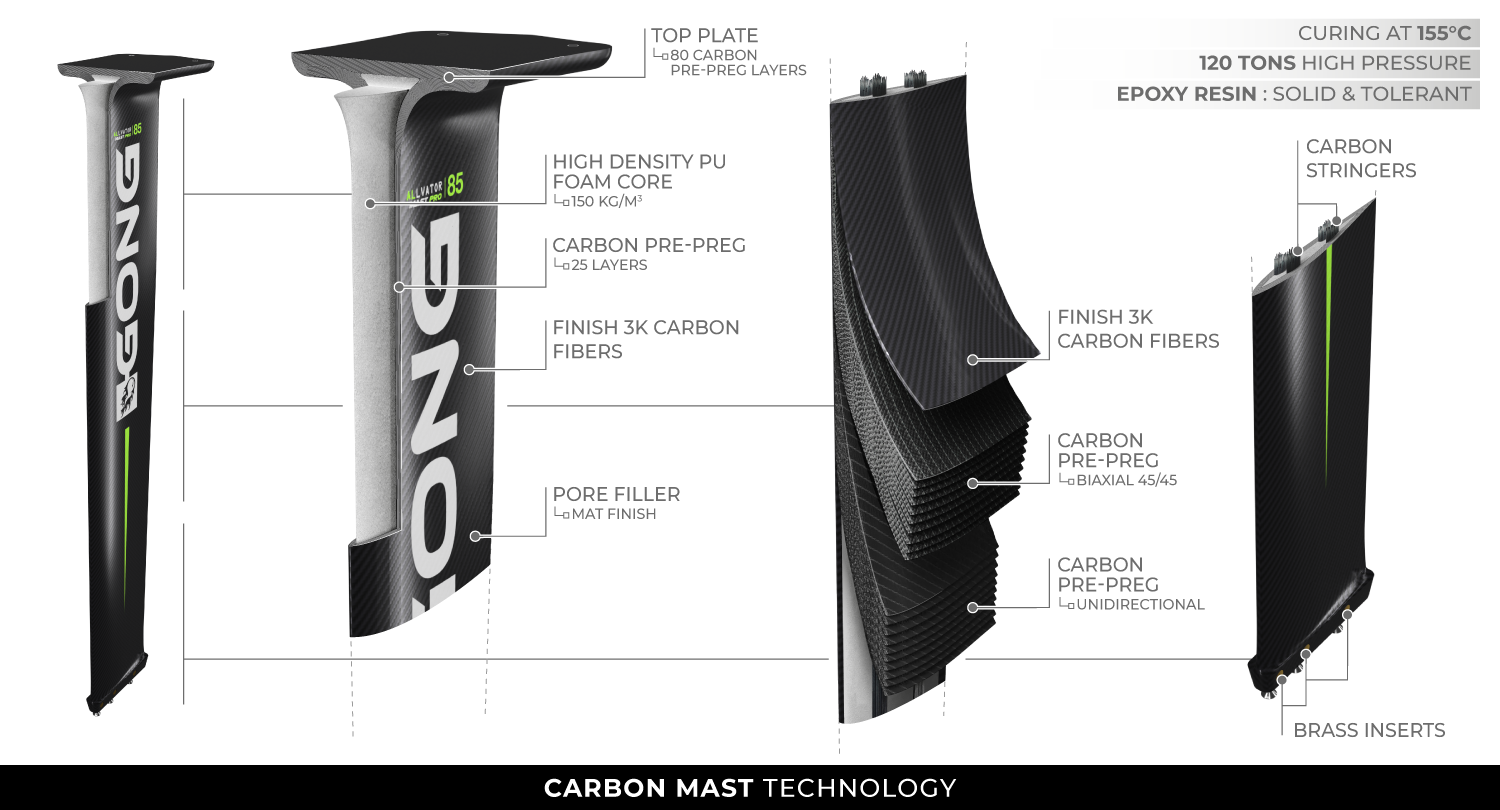
3/ The HM (high modulus) Carbon masts:
This high modulus and prepreg full carbon mast is essential in the quiver of a demanding rider. Its high modulus carbon construction with internal stringer is super rigid and responsive. This technology is the ultimate in high pressure, high temperature molded carbon construction.
TORAY M40J high modulus carbon offers incredible stiffness. It is a high-end carbon that delivers high mechanical properties while remaining resistant. A carbon popular in aeronautics as well as for high-end sports equipment. Its mechanical characteristics such as its superior tensile strength and Young’s modulus make it possible to obtain exceptional performance on the water.

The HM coupled with an internal stiffening stringer increases the performance of these masts tenfold. The decrease in bending is around 30% and the decrease in torsion is around 40% compared to the already excellent quality Carbon mast.

Our HM V3 Carbon masts are available in different thicknesses:
To cover all foil practices (wing foil, surf/SUP foil, kite foil, pump foil, or wake foil), we offer the HM70, HM77, HM85, HM92, and HM107 (V2) masts.

The use of wings with very large wingspans calls for the use of masts capable of responding to the enormous mechanical stresses that they produce. For these giant wings (from 120cm wingspan), specific shapes of our HM masts have been developed. These are the masts 70HM/19mm, 77HM/19mm and 85HM/16mm. Their use is strongly recommended to extract the full potential of these front wings which are magic in small conditions. As is the use of the Titanium Pro fuselage which is an insurance of durability for the important constraints associated with this type of front wing, in particular when pumping.
On these specific shapes, the fillets at the level of the top plate have been completely redesigned to take up the forces over the entire length of the latter. This geometry maximizes torsional rigidity.

There is also a slightly thicker profile as shown in the table below. This further increases rigidity by losing only limited top speed on masts intended for the use of large front wings where early take-off and pumping are the top priorities.

In conclusion
- For a small budget to learn and progress > Alu V2 mast (55, 65, 85 or 95) or Alu V1 mast (45, 60, 80, 90).
- The lightness and dynamism of carbon > Carbone V2 mast (70, 85 or 100).
- Rigidity for next level performance > HM mast (70HM/15mm, 77HM/15mm, 85HM/14mm, 85HM/15mm, 92HM/13mm, 107HM/13mm).
- Giant front wings (wingspan > 120cm) > HM mast (70HM/19mm, 77HM/19mm and 85HM/16mm)
All of our complete beginner foil set-ups come standard with aluminum masts. In this way, it allows you to have the most accessible foil possible, both in terms of use and budget.
That being said, there is no minimum level required to switch to carbon. Quite the contrary, because it will help you to be more precise and stay in control. It is never premature to switch to a carbon mast. It is above all an investment in your progression curve and a comfort asset in sessions, as for transport.


